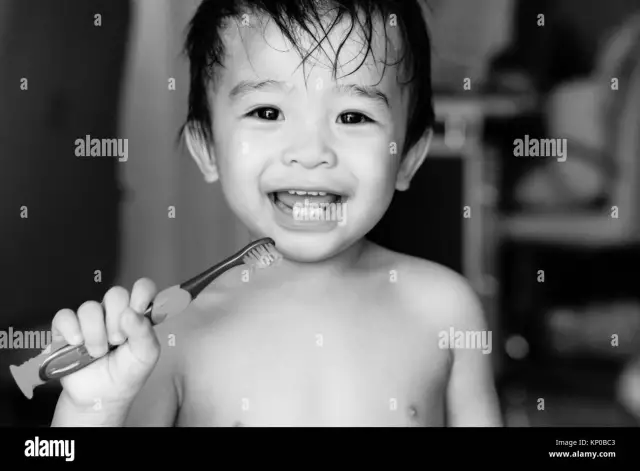- Author Rachel Wainwright [email protected].
- Public 2023-12-15 07:39.
- Last modified 2025-11-02 20:14.
Change of teeth in children

Changing teeth in children is a physiological process that provides not only the need for the chewing apparatus for a larger dentition, but also the normal growth of the bones of the facial skeleton. The average age at which teeth change begins is six years. Usually at the age of six years, plus or minus six months, the first milk tooth falls out, as a rule, this is the central lower incisor. The change of teeth occurs gradually, so that the chewing function does not suffer.
The first sign of an impending change of teeth is the appearance of gaps between the teeth. Growing gaps mean that the jaw is growing and milk teeth no longer provide optimal stress on the masticatory muscles and the temporomandibular joint, which means that teeth change is just around the corner. Changes begin from the roots of deciduous teeth, which undergo resorption under the pressure of the primordia of permanent teeth. The process starts from the apex of the tooth root, gradually approaching its outer part. When the root has completely resolved, the tooth falls out, and space is made in the jaw for a new, larger permanent tooth.
Normally, when changing teeth, a permanent tooth begins to grow only after the milk one has fallen out. Sometimes, for various reasons, there is a delay in the resorption of the roots of a milk tooth, and it is impossible for a growing permanent tooth to take its "rightful" place. Then it erupts nearby, in the wrong anatomical position. At the first signs that a permanent tooth is erupting without the loss of milk, you need to contact your dentist who will find out the reasons for what is happening and make room in the jaw for a new tooth. Otherwise, the resulting defect in the position of the teeth will have to be corrected later and for a longer time, by wearing an orthodontic plate or braces.
Among other deviations in the change of teeth, it should be noted the absence of tooth germs, which are laid in early childhood, but this rarely happens. Sometimes the tooth germ can be damaged due to the fact that the milk tooth that grew before it was infected and the infection was transmitted to the germ. Violations are of varying severity, in extreme cases the rudiment of a permanent tooth may die altogether, so it is important to

treat milk teeth in a timely manner.
More often, a permanent tooth causes a false alarm with its incorrect position, since it does not come out strictly perpendicular to the jaw, frightening the parents. This is not to be feared, as the tooth grows, it will unfold and fall into place. For your own peace of mind, you can consult with a doctor who will be able to determine exactly whether the change of teeth is taking place correctly or with deviations, and will help to adjust the process if necessary.
Found a mistake in the text? Select it and press Ctrl + Enter.






